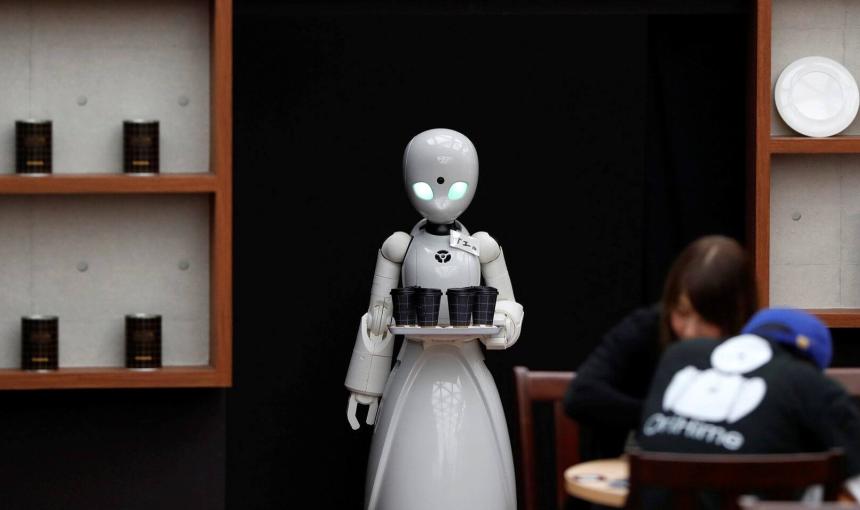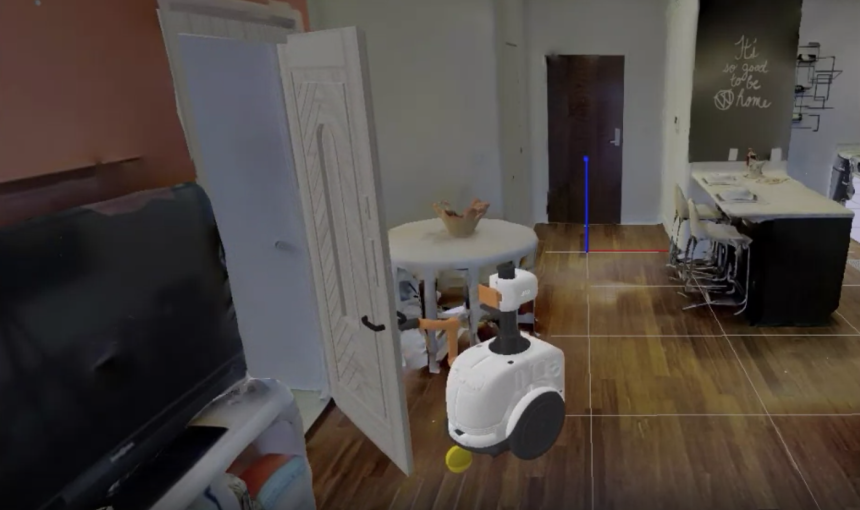
REUTERS/Pascal Rossignol
A robot carries orders at an Amazon fulfillment center.
Robots can’t catch the COVID virus or get sick, and they can keep people at safe distances on factory or warehouse floors.
But Stanford researchers who have been interviewing and observing both robot manufacturers and major customers say that the pandemic hasn’t prompted a rush of robot purchases. Instead, they say, COVID is accelerating the demand for “plug-and-play” automation that is smaller, simpler, and easier to move from one job to another.
The researchers are studying how the COVID pandemic has affected robot deployment at companies in warehousing and logistics as part of a broader, multiyear research program of AI-powered robot adoption in the workplace. Erik Brynjolfsson, director of the Digital Economy Lab at Stanford’s Institute for Human-Centered Artificial Intelligence, initiated the program with Matt Beane, a digital fellow in Brynjolfsson’s lab and faculty member at UC Santa Barbara.
These companies, at the heart of fulfilling online purchases, already use a great deal of automation and have been racing to keep up with demand since the pandemic began.
In general, employees at all levels at those companies told the researchers they haven’t been adding big new robots. Why? Because larger-scale robotic systems are immobile and enormously difficult to incorporate into ongoing operations without significant disruption.
Many of the traditional warehouse automation systems are massive and often caged to keep them from hurting human workers. Such systems have to be integrated into a company’s information networks. And companies that install them usually have to reorganize their workflow processes, their workforces, and sometimes even their product lines.
“It’s never enough to just turn these robotic systems on,” says Brynjolfsson. “The integration is a huge job, and the cost can be ten times as much as the costs of the robots themselves. This leads to a productivity ‘J-curve’: When you first introduce the technology, there’s a dip in productivity and only later a takeoff. But that takeoff can take years or even a decade.”
The Productivity Paradox
It was Robert Solow of MIT who first wrote about the productivity J-curve and who observed in the 1980s that advances in computing hadn’t had any apparent impact on overall productivity for many years. The reason for that “productivity paradox,” Solow argued, was that companies hadn’t figured out how to fully take advantage of that new computing power.
Brynjolfsson says robotics are at a similar point right now.
Because companies can’t re-engineer themselves on the fly, especially if they’re racing to keep up with current demand, adding major new robotic systems would clearly put companies on the down slope of the J-curve.
But Brynjolfsson and Beane argue in a new article that COVID may be accelerating a profound change that gets robotics to the upside of that J-curve.
Modest Bots
“Plug-and-play” systems are much more mundane than the advanced robots that dominate the headlines. Most don’t even rely on artificial intelligence. But they embody sophisticated new automation that can be put to practical use with relatively modest preparation and disruption.
Plug-and-play systems include automated guided vehicles, which use laser-based LIDAR sensors to navigate around factory or warehouse floors. They also include computer-controlled conveyors and sorting machines and even automated baggers.
Automated baggers, for example, use sensors to analyze the size and shape of countless different products and then put each one into the proper-sized plastic bag for shipment to customers.
“It looks more like a giant X-ray scanner at an airport than a robot,” says Beane. “But you can put all kinds of things into it and it comes up with the appropriately sized bag. It can do that for 1,200 pieces an hour. You can have an auto bagger delivered at your warehouse on just a few pallets; it’s easy to set up and you can reposition it to another conveyer and have it spitting out products in 24 hours.”
Brynjolfsson and Beane say the surging demand for plug-and-play systems signals a potentially profound shift toward robots that are highly sophisticated on the inside but appear simple on the outside. As robot manufacturers catch on to the rising demand for plug-and-play robots, spurred in part by the COVID pandemic, they will come closer to delivering the real promise of robot productivity.
“There’s an instructive lesson here from the introduction of electricity,” Brynjolfsson says. “When factories became electrified [at the start of the 1900s], they didn’t have any significant productivity increase for 30 years. It only happened when they realized that electricity allowed them to change from having one huge steam-powered motor to having smaller motors in everything. Then you had a doubling or tripling of productivity. The same is true today of advanced robotics.”
Stanford HAI's mission is to advance AI research, education, policy and practice to improve the human condition. Learn more.

